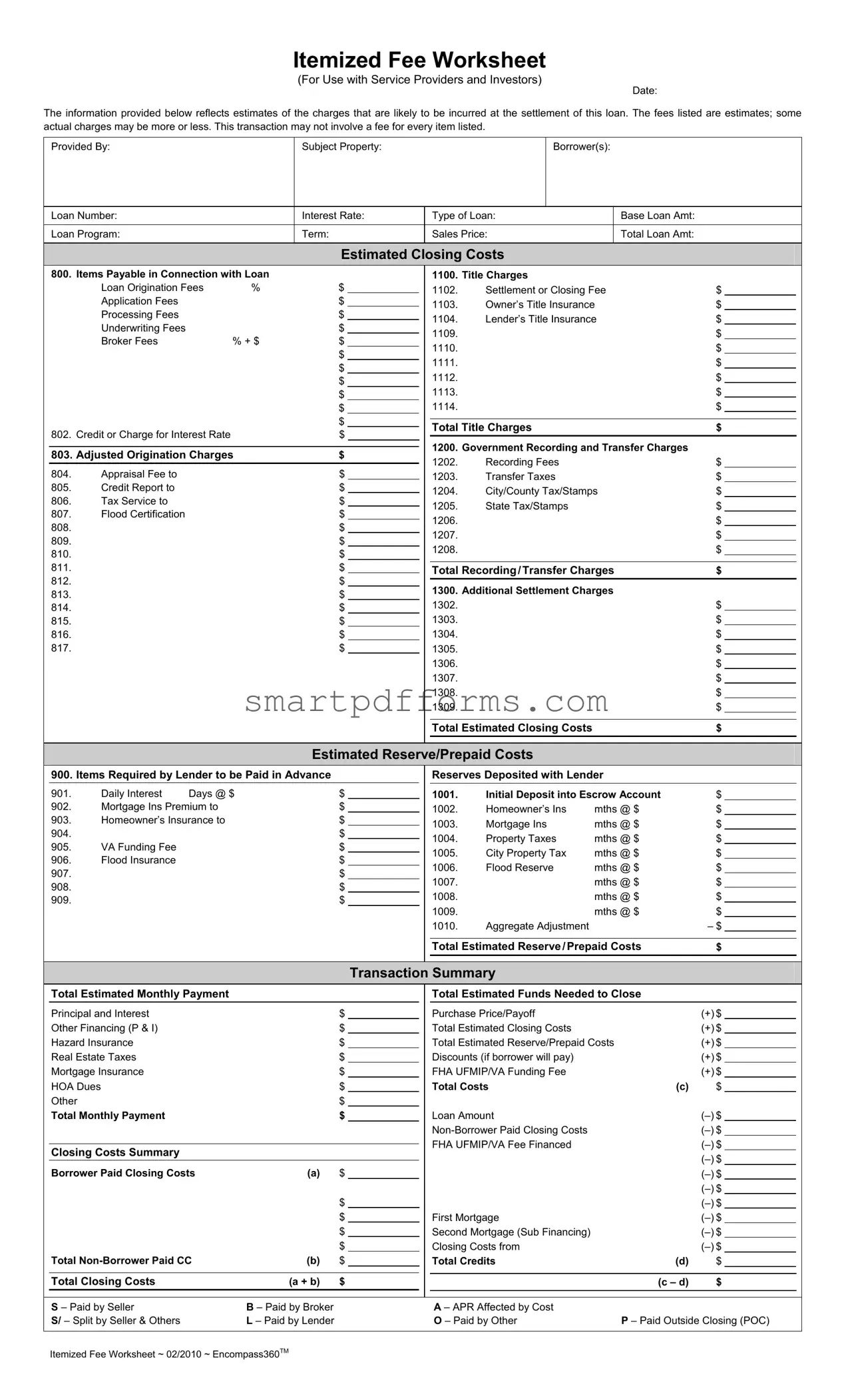What is an Itemized Fee Worksheet?
The Itemized Fee Worksheet is a detailed document designed to provide borrowers and lenders with an estimate of the charges expected at the settlement of a loan. It lists various fees related to the loan, title, government recording, and additional settlement charges. The worksheet highlights both the borrower-paid and lender-paid costs, offering a comprehensive overview of potential expenses before closing.
Why is it important to have an Itemized Fee Worksheet?
Having an Itemized Fee Worksheet is crucial for both transparency and preparation. It helps borrowers understand the financial commitment they are about to make and ensures there are no surprises at the closing table. For lenders and investors, it facilitates clear communication of estimated costs, helping to maintain trust and avoid potential disputes.
Are the fees listed on the worksheet the final amounts I will be charged?
No, the fees listed on the Itemized Fee Worksheet are estimates based on the lender’s experience and current market conditions. Actual charges at the time of settlement may be higher or lower than the estimates provided. This document is intended as a guide to help you plan for the closing costs you will likely incur.
Can the number of items listed on the worksheet vary for different transactions?
Yes, not every transaction will involve a fee for every item listed on the worksheet. The number and type of charges can vary significantly based on the specifics of the loan, such as the type of loan, the property being financed, and the requirements of the lender.
What are "Items Payable in Connection with Loan"?
"Items Payable in Connection with Loan" refers to fees directly associated with processing, approving, and funding the loan. This category may include loan origination fees, application fees, underwriting fees, and broker fees, among others.
What are "Title Charges"?
Title charges encompass the costs related to ensuring that the title to the property is clear and can be legally transferred. These fees may include the cost of title insurance for both the owner and the lender, settlement or closing fees, and any additional fees required to resolve title issues.
What are "Government Recording and Transfer Charges"?
Government recording and transfer charges are fees imposed by local governments for recording the deed and mortgage and transferring ownership of the property. These might include recording fees, transfer taxes, and city/county/state tax stamps.
What are "Additional Settlement Charges"?
Additional Settlement Charges include miscellaneous expenses necessary to complete the real estate transaction. This can cover a wide range of services such as surveys, pest inspections, and any necessary repairs that were agreed upon before closing.
What does "Estimated Reserve/Prepaid Costs" mean?
"Estimated Reserve/Prepaid Costs" represent funds that the lender requires the borrower to pay in advance at closing. These costs typically include prepaid interest, initial deposits into the escrow account for homeowners insurance and property taxes, and any other prepaid items required by the lender.
How are the "Total Estimated Funds Needed to Close" calculated?
The "Total Estimated Funds Needed to Close" is calculated by summing the total estimated closing costs, estimated reserve/prepaid costs, purchase price/payoff, and any discounts or additional financing. It then subtracts any loan amounts, borrower-paid closing costs, financed fees, and credits or contributions from sellers, brokers, or others. This provides a comprehensive estimate of the total amount a borrower needs to bring to the closing.
